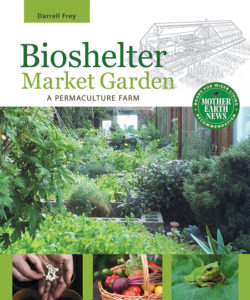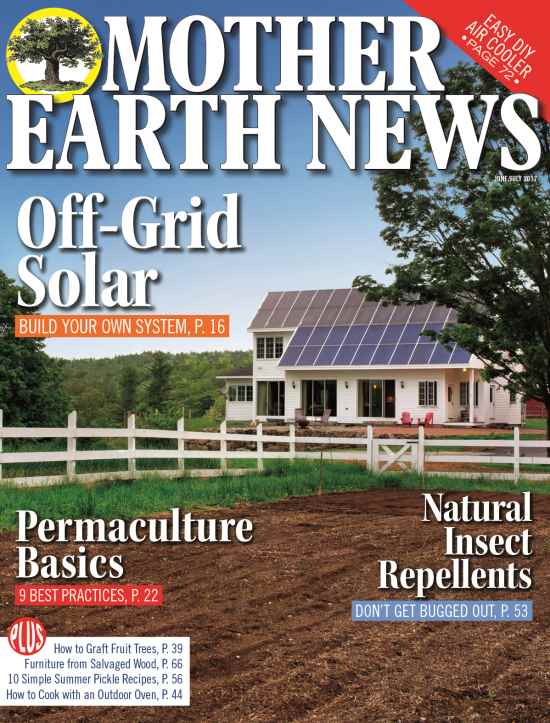Excerpted from Bioshelter Market Garden by Darrell Frey
Market Surveys
Once we had agreed upon a business structure, we began market research. As we completed our bioshelter and began to establish gardens, we distributed samples of our crops. Our initial focus on specialty crops, such as salad mix, herbs and arugula, was met with indifference by local chefs and grocers. However, our first attempts at marketing in Pittsburgh, 60 miles away, were immediately successful. Pittsburgh chefs were very receptive to buying fresh and local products. Several chefs took us into their coolers and showed us exactly what they were buying and began to instruct us on custom growing for their needs.
We also found a ready market in a specialty food store in Pittsburgh. This store provided a good market for our salad and gourmet greens. Continuous feedback from early customers helped us refine our products and improve our production as we expanded our gardens.
Planning
A clear business plan that considers all areas of the operation is the first step in business development. These areas include production strategies, accounting, inventory management and marketing. Our business plan was simple. We would develop our gardens over a period of several years, as our experience and sales grew. Key to the whole process was the availability of free manure for compost. Keeping a small dump truck parked at a nearby stable and bringing home a load of horse manure and bedding each week allowed us to keep up with the nutrient demands of an expanding operation. As our reputation for quality and service grew, so did the demand for our products.
Many customers pay on delivery. All pay within 30 days. We keep clear records of all sales and expenses with a sales ledger and a business checking account. Expenses and income recorded in the ledger and check books are entered into a computer bookkeeping program (I use Microsoft Money), which allows us to generate various useful reports on sales and expenses. We hire a tax accountant each year to process our tax returns.
Cash Flow
Farm cash flow can be directly correlated to available sunlight. During the winter, harvested crops are fewer, but many costs are the same. In our own snowbelt climate, crop production can be slow from December 1 until January 15 due to short and cloudy winter days. This can be a trying time without careful planning. Happily, we’ve found that bioshelter production can provide winter income; during the darker days of winter, we sell eggs, plants, and holiday and seasonal crafts, such as herbal wreaths and pressed flower cards.
Increasing day length increases production from the bioshelter and the outdoor cold frames in late winter. The sales of produce subscriptions and plants in late winter and early spring provide a much-needed increase in farm income, allowing us to purchase the upcoming season’s gardening supplies. In the fall, a farm needs to have adequate cash reserves to meet financial needs and obligations through the shorter days ahead. A farm also needs to enter the winter with enough funds to purchase seeds, plants and other supplies for the following year. Planning an annual budget that accounts for costs and income, with reserves for the year ahead is critical to sustaining a farm.
Inventory and Supply
Produce
We do not keep our products in inventory. Basically, we only harvest the amount of produce we need to fill orders plus a small amount for farm sale. We generally eat whatever produce is left after weekend sales, but we actually have very little unsold produce. Bolted lettuce and other crop residue are fed to the chickens.
Supplies and Maintenance
We do maintain an inventory of supplies. The garden manager keeps track of seed and plant material, fertilizer and potting soil, flats, pots, garden tools and related items. The farm manager (me) keeps track of general accounting, utility bills, and kitchen supplies such as packaging, boxes, labels and harvest tools. I also develop and maintain the facilities.
Like the farmers of my grandfather’s generation, I am, on various days, a mechanic, a plumber, an electrician, a carpenter, a designer, and a horticulturist. Each activity requires an inventory of tools and printed references. Tools are stored in the “barn,” or tool shed, attached to the bioshelter. Service manuals and maintenance schedule are also stored there. Important references are kept in a small library in the bioshelter, or in the farm office.
Together, as farm manager and garden manager, we direct a small garden crew and interns.
You may also enjoy these excerpts from Bioshelter Market Garden:
This excerpt has been reprinted with permission from Bioshelter Market Garden by Darrel Frey and published by New Society Publishers, 2011.











